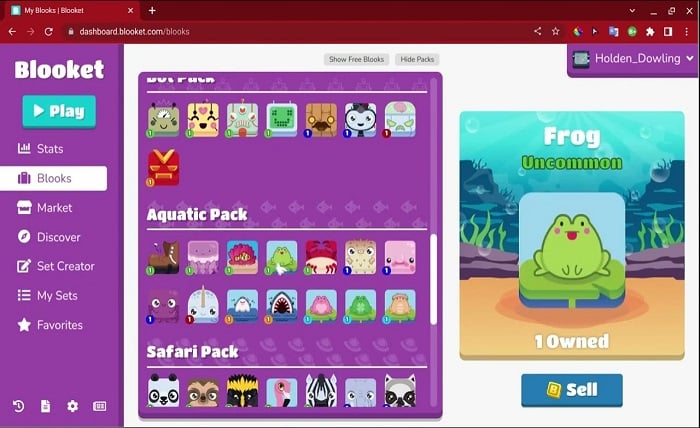
The Bloket dashboard is a powerful tool used by businesses to manage data, streamline operations, and make informed decisions. Whether you’re a small business owner or part of a large corporation, the Bloket dashboard can make a significant impact on your daily operations. In this blog post, we’ll break down everything you need to know about the Bloket dashboard, its features, and how you can leverage it to optimize your workflow.
What is the Bloket Dashboard?
The Bloket dashboard is an all-in-one platform designed to help businesses track key metrics, manage their teams, and make data-driven decisions. It consolidates various data points into a visually appealing and user-friendly interface. With customizable views and interactive charts, the Bloket dashboard allows you to monitor everything from sales performance to customer engagement, all in one place.
Businesses often struggle with multiple tools for tracking performance, making it difficult to get a clear overview of their operations. The Bloket dashboard solves this problem by consolidating various metrics and KPIs into a single interface. This enables teams to collaborate more efficiently, improve productivity, and make faster, informed decisions.
Key Features of the Bloket Dashboard
The bloket dashboard is equipped with several robust features designed to meet the needs of various types of businesses. Some of the standout features include:
- Customizable Widgets: Users can customize their dashboard to display widgets that show real-time data. Whether you need sales figures, web traffic, or social media analytics, you can set it up just the way you want.
- Real-Time Analytics: The Bloket dashboard offers real-time insights into your business operations. This feature allows you to track sales, performance metrics, and other data as it happens, helping you respond to changes instantly.
- Data Visualization: With various charts, graphs, and tables, the Bloket dashboard allows you to visualize data easily. This makes it easier to spot trends, identify potential issues, and develop strategies for improvement.
- Team Collaboration: One of the key features of the Bloket dashboard is the ability to collaborate with your team. You can share data insights, assign tasks, and provide real-time feedback, fostering better communication among team members.
- Integration with Other Tools: The Bloket dashboard can be integrated with other business tools such as CRM systems, marketing platforms, and project management software. This integration ensures a seamless flow of data, helping you maintain an organized workflow.
How the Bloket Dashboard Can Improve Your Workflow
The Bloket dashboard plays a crucial role in optimizing business operations. Here’s how it can help improve your workflow:
- Centralized Data Management: The Bloket dashboard consolidates data from various sources, so you don’t have to switch between different apps or platforms. With everything in one place, you can save time and reduce errors.
- Enhanced Decision-Making: With access to real-time data and detailed analytics, the Bloket dashboard helps you make better decisions faster. By analyzing trends and KPIs, you can adjust your strategies on the fly and achieve better results.
- Increased Productivity: Since the Bloket dashboard is customizable, you can tailor it to show the most relevant data for your team. This reduces distractions and ensures everyone focuses on the most important tasks at hand, improving overall productivity.
- Better Resource Allocation: The data insights provided by the Bloket dashboard help you allocate resources more effectively. By understanding which areas of your business need more attention, you can distribute resources accordingly and maximize your team’s output.
Setting Up the Bloket Dashboard: A Step-by-Step Guide
Setting up the Bloket dashboard is a straightforward process. Here’s how you can get started:
- Sign Up and Log In: First, create an account on the Bloket platform. After signing up, log in to your dashboard.
- Choose Your Metrics: Decide on the metrics that are most relevant to your business. This could include sales, customer satisfaction, or social media engagement.
- Customize Your Widgets: Bloket allows you to add widgets to your dashboard. Choose the widgets that best display the metrics you want to track.
- Connect Other Tools: If you use other business tools, like a CRM or email marketing platform, you can integrate them with the Bloket dashboard for a more seamless workflow.
- Share with Your Team: Once your dashboard is set up, share it with your team. Encourage them to collaborate by adding comments, sharing insights, and assigning tasks directly through the dashboard.
Advantages of Using the Bloket Dashboard for Business Growth
There are several reasons why businesses should consider using the Bloket dashboard to manage their operations. These include:
- Streamlined Operations: With all your key metrics in one place, you can quickly identify areas that need attention and act accordingly. This streamlines your operations and helps you focus on what matters most.
- Faster Response Time: Real-time analytics ensure that you can respond to changes quickly. Whether you need to adjust a marketing campaign or change your sales approach, the Bloket dashboard helps you react in real-time.
- Data-Driven Decisions: The Bloket dashboard encourages businesses to make decisions based on data, rather than guesswork. By analyzing performance metrics, you can identify trends and opportunities for growth.
- Cost Savings: By improving efficiency and optimizing resource allocation, the Bloket dashboard can help businesses reduce costs. This makes it a cost-effective tool for both small and large enterprises.
Common Challenges and How to Overcome Them with the Bloket Dashboard
While the Bloket dashboard is a powerful tool, there are some common challenges that users may face. Here’s how to overcome them:
- Learning Curve: New users may find it challenging to get used to the interface. To overcome this, Bloket offers tutorials and customer support to guide you through the setup process.
- Data Overload: With so much data at your fingertips, it can be overwhelming. To avoid this, focus on tracking the most important metrics for your business and customize your dashboard accordingly.
- Integration Issues: Sometimes, integrating other tools with the Bloket dashboard can be tricky. If you encounter issues, Bloket’s support team can assist with troubleshooting and provide integration guides.
Conclusion
In today’s fast-paced business environment, staying on top of key performance metrics is essential for success. The Bloket dashboard offers an efficient and intuitive way to manage data, optimize workflows, and make data-driven decisions. By providing real-time insights, customizable widgets, and team collaboration tools, it enables businesses to streamline operations and achieve their goals more effectively.
Whether you’re a small business or a large corporation, the Bloket dashboard has the features you need to succeed. By integrating it into your daily operations, you can improve productivity, make faster decisions, and ultimately drive business growth. If you haven’t yet explored the power of the Bloket dashboard, now is the time to take the leap.
FAQs
1. What is the Bloket dashboard used for?
The Bloket dashboard is used to track key metrics, manage business operations, and make data-driven decisions. It consolidates data from various sources into a user-friendly interface.
2. How do I set up the Bloket dashboard?
Setting up the Bloket dashboard involves signing up, customizing your widgets, connecting other tools, and sharing the dashboard with your team. Tutorials and support are available for assistance.
3. Can the Bloket dashboard integrate with other tools?
Yes, the Bloket dashboard can be integrated with various business tools such as CRM systems, marketing platforms, and project management software to provide a seamless workflow.
4. Is the Bloket dashboard suitable for small businesses?
Absolutely! The Bloket dashboard is scalable and customizable, making it suitable for businesses of all sizes. It helps streamline operations and improve decision-making, regardless of business size.
5. How does the Bloket dashboard help with team collaboration?
The Bloket dashboard allows team members to share data insights, assign tasks, and provide real-time feedback, fostering better collaboration and communication across the team.





